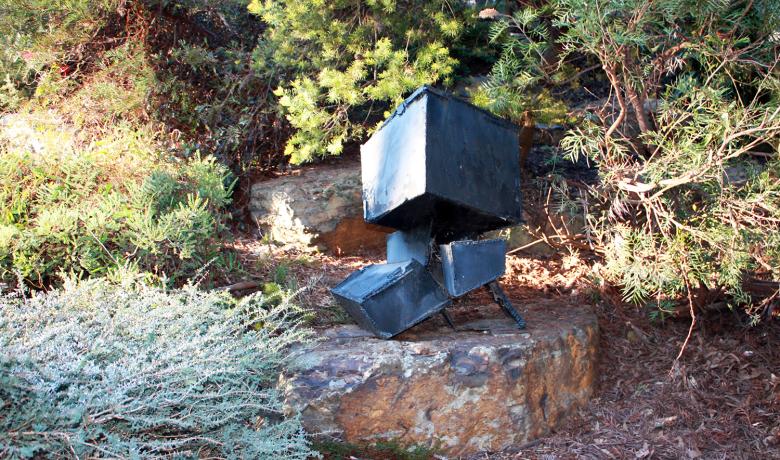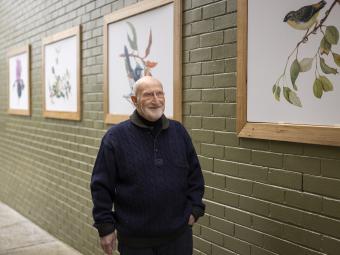Boulder belongs to a series of twelve sculptures created between 1966 and 1972. They were inspired by the landscape off the coast of Western Australia.
"My fascination was with the precarious balance of large forms perched on top of small ones, emphasising movement at the same time. The rough welding is intentional; the small pieces are incorporated to enliven the smooth surface of the simple shapes. I see these works as part of the landscape, the black colour contrasting with the grey green of the surrounding foliage. The represent a move away from earlier figuration.” - Inge King
Also by Inge King - Sentinel.
Boulder was acquired by the City of Doncaster and Templestowe in 1994. We gratefully acknowledge the donations contributed towards the purchase of the work by Potters Cottage, Warrandyte Arts and Education Trust, and Warrandyte Community Market Committee.
Location of artwork
- Warrandyte Community Centre - 168 Yarra Street, Warrandyte VIC 3113
- View on map
About the artist
Inge King AM was pivotal in developing and diversifying abstract sculpture in Australia and worked actively until she was 98 years old.
Born in Berlin, King trained at the Berlin Academy from 1937 to 1938, the Royal Academy School in London in 1940, and the Glasgow School of Art, Scotland, from 1941 to 1943. She taught art in Glasgow and London from 1944 to 1949. After moving to Australia in 1950, she taught sculpture at the Royal Melbourne Institute of Technology from 1976 to 1987.
A powerful female voice in the male-dominated sphere of industrial sculpture, King was part of the Centre Five group whose mission it was to help foster greater public awareness of contemporary art while integrating large-scale sculpture with architecture.
King used industrial techniques and surface finishes to construct refined geometric sculptures. With sequential shapes and formalist progressions, her works give a sense of movement frozen in time. The artist considered sculpture ‘vision in motion’ and described her work as ‘drawing from a thousand different angles’.
The importance of the viewer’s perspective and their dynamic experience of each object and its environment was central to King’s practice.
Learn more about Inge King
- Website - National Gallery of Victoria
- Website - Art Gallery of NSW
- Website - National Gallery of Australia
- Website - Australian Centre for Contemporary Art




